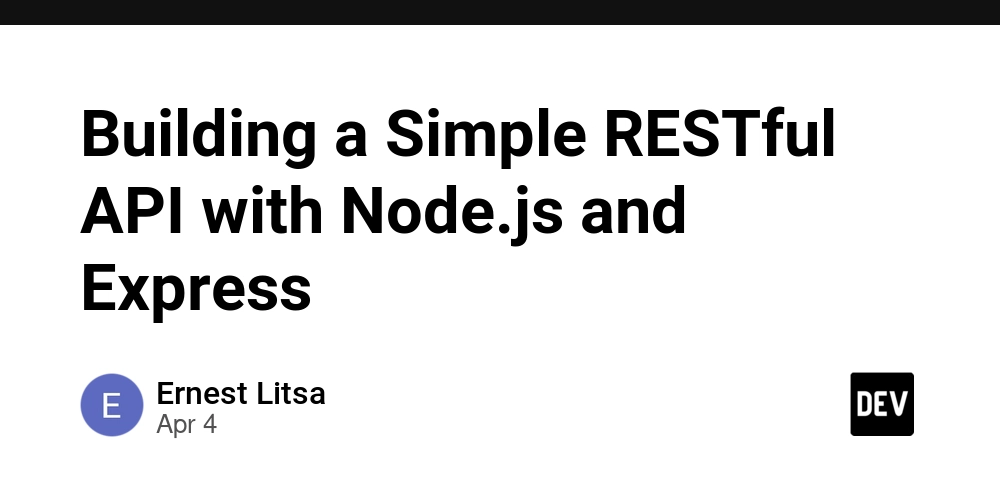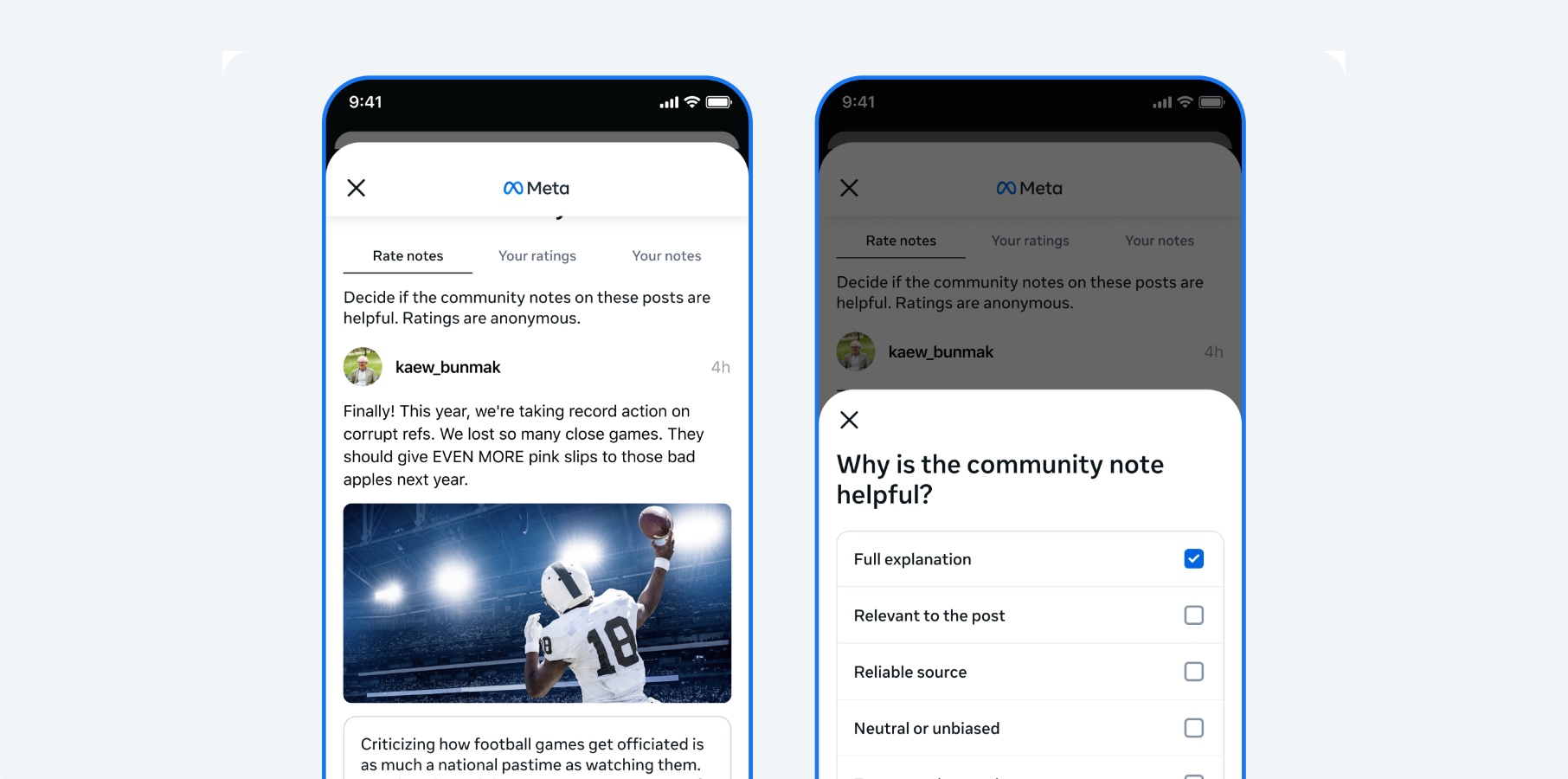Building a Simple RESTful API with Node.js and Express
Building a Simple RESTful API with Node.js and Express In this tutorial, we will walk through the process of building a simple RESTful API using Node.js and Express. RESTful APIs are widely used for building web services, and learning how to create one from scratch will help you build scalable and maintainable back-end services. Prerequisites Before we get started, make sure you have the following tools installed on your machine: Node.js - JavaScript runtime npm - Node.js package manager (comes with Node.js) A code editor like VS Code If you haven't installed these already, please install them from their respective websites. Step 1: Setting up the Project Let’s create a new directory for our project and initialize it with npm: mkdir node-express-api cd node-express-api npm init -y This will create a package.json file with the default values. Now, let’s install Express, which will help us set up the server: npm install express Step 2: Creating the Server Now, create a file called server.js in your project folder. This will be the entry point of our application. // server.js const express = require('express'); const app = express(); const PORT = process.env.PORT || 3000; // Middleware to parse JSON app.use(express.json()); // Sample route to check if the server is running app.get('/', (req, res) => { res.send('Hello, World!'); }); // Start the server app.listen(PORT, () => { console.log(`Server is running on port ${PORT}`); }); Explanation: We’re importing the express module and creating an instance of the app using express(). We’re also using app.use(express.json()) to ensure the server can parse JSON request bodies. We define a simple GET route at / that returns "Hello, World!" when accessed. Finally, the server listens on port 3000 (or any port specified in process.env.PORT). Step 3: Testing the Server At this point, the server is set up. To test it, run the following command in your terminal: node server.js You should see Server is running on port 3000. Open your browser and navigate to http://localhost:3000. You should see the message "Hello, World!". Step 4: Creating API Routes Now let’s extend the API to include some more useful routes. We’ll create a simple API to manage blog posts. Defining Routes: Let’s assume each post will have a title, content, and an author. We’ll define the following routes: GET /posts: Retrieve all posts. POST /posts: Create a new post. GET /posts/:id: Retrieve a single post by its ID. PUT /posts/:id: Update a post by its ID. DELETE /posts/:id: Delete a post by its ID. Adding Routes to the server.js: // server.js const express = require('express'); const app = express(); const PORT = process.env.PORT || 3000; app.use(express.json()); // Sample in-memory database (array of posts) let posts = [ { id: 1, title: "First Post", content: "This is my first blog post!", author: "John Doe" }, { id: 2, title: "Second Post", content: "This is my second blog post!", author: "Jane Doe" } ]; // Route to get all posts app.get('/posts', (req, res) => { res.json(posts); }); // Route to get a single post by ID app.get('/posts/:id', (req, res) => { const post = posts.find(p => p.id === parseInt(req.params.id)); if (!post) { return res.status(404).json({ message: "Post not found" }); } res.json(post); }); // Route to create a new post app.post('/posts', (req, res) => { const { title, content, author } = req.body; const newPost = { id: posts.length + 1, title, content, author }; posts.push(newPost); res.status(201).json(newPost); }); // Route to update an existing post app.put('/posts/:id', (req, res) => { const post = posts.find(p => p.id === parseInt(req.params.id)); if (!post) { return res.status(404).json({ message: "Post not found" }); } const { title, content, author } = req.body; post.title = title; post.content = content; post.author = author; res.json(post); }); // Route to delete a post app.delete('/posts/:id', (req, res) => { const postIndex = posts.findIndex(p => p.id === parseInt(req.params.id)); if (postIndex === -1) { return res.status(404).json({ message: "Post not found" }); } posts.splice(postIndex, 1); res.status(204).send(); }); // Start the server app.listen(PORT, () => { console.log(`Server is running on port ${PORT}`); }); Explanation: In-memory Database: We use a simple array (posts) to simulate a database. GET /posts: Returns all posts in the array. GET /posts/:id: Finds a post by its ID and returns it. POST /posts: Accepts a JSON body with title, content, and author, creates a new post, and returns the created post with a 201 status code. PUT /posts/:id: Finds a post by its ID and updates it with new title, content, and author values. DELETE /posts/:id: Finds a

Building a Simple RESTful API with Node.js and Express
In this tutorial, we will walk through the process of building a simple RESTful API using Node.js and Express. RESTful APIs are widely used for building web services, and learning how to create one from scratch will help you build scalable and maintainable back-end services.
Prerequisites
Before we get started, make sure you have the following tools installed on your machine:
- Node.js - JavaScript runtime
- npm - Node.js package manager (comes with Node.js)
- A code editor like VS Code
If you haven't installed these already, please install them from their respective websites.
Step 1: Setting up the Project
Let’s create a new directory for our project and initialize it with npm:
mkdir node-express-api
cd node-express-api
npm init -y
This will create a package.json file with the default values. Now, let’s install Express, which will help us set up the server:
npm install express
Step 2: Creating the Server
Now, create a file called server.js in your project folder. This will be the entry point of our application.
// server.js
const express = require('express');
const app = express();
const PORT = process.env.PORT || 3000;
// Middleware to parse JSON
app.use(express.json());
// Sample route to check if the server is running
app.get('/', (req, res) => {
res.send('Hello, World!');
});
// Start the server
app.listen(PORT, () => {
console.log(`Server is running on port ${PORT}`);
});
Explanation:
- We’re importing the
expressmodule and creating an instance of the app usingexpress(). - We’re also using
app.use(express.json())to ensure the server can parse JSON request bodies. - We define a simple
GETroute at/that returns "Hello, World!" when accessed. - Finally, the server listens on port
3000(or any port specified inprocess.env.PORT).
Step 3: Testing the Server
At this point, the server is set up. To test it, run the following command in your terminal:
node server.js
You should see Server is running on port 3000. Open your browser and navigate to http://localhost:3000. You should see the message "Hello, World!".
Step 4: Creating API Routes
Now let’s extend the API to include some more useful routes. We’ll create a simple API to manage blog posts.
Defining Routes:
Let’s assume each post will have a title, content, and an author. We’ll define the following routes:
-
GET /posts: Retrieve all posts. -
POST /posts: Create a new post. -
GET /posts/:id: Retrieve a single post by its ID. -
PUT /posts/:id: Update a post by its ID. -
DELETE /posts/:id: Delete a post by its ID.
Adding Routes to the server.js:
// server.js
const express = require('express');
const app = express();
const PORT = process.env.PORT || 3000;
app.use(express.json());
// Sample in-memory database (array of posts)
let posts = [
{ id: 1, title: "First Post", content: "This is my first blog post!", author: "John Doe" },
{ id: 2, title: "Second Post", content: "This is my second blog post!", author: "Jane Doe" }
];
// Route to get all posts
app.get('/posts', (req, res) => {
res.json(posts);
});
// Route to get a single post by ID
app.get('/posts/:id', (req, res) => {
const post = posts.find(p => p.id === parseInt(req.params.id));
if (!post) {
return res.status(404).json({ message: "Post not found" });
}
res.json(post);
});
// Route to create a new post
app.post('/posts', (req, res) => {
const { title, content, author } = req.body;
const newPost = { id: posts.length + 1, title, content, author };
posts.push(newPost);
res.status(201).json(newPost);
});
// Route to update an existing post
app.put('/posts/:id', (req, res) => {
const post = posts.find(p => p.id === parseInt(req.params.id));
if (!post) {
return res.status(404).json({ message: "Post not found" });
}
const { title, content, author } = req.body;
post.title = title;
post.content = content;
post.author = author;
res.json(post);
});
// Route to delete a post
app.delete('/posts/:id', (req, res) => {
const postIndex = posts.findIndex(p => p.id === parseInt(req.params.id));
if (postIndex === -1) {
return res.status(404).json({ message: "Post not found" });
}
posts.splice(postIndex, 1);
res.status(204).send();
});
// Start the server
app.listen(PORT, () => {
console.log(`Server is running on port ${PORT}`);
});
Explanation:
-
In-memory Database: We use a simple array (
posts) to simulate a database. - GET /posts: Returns all posts in the array.
- GET /posts/:id: Finds a post by its ID and returns it.
-
POST /posts: Accepts a JSON body with
title,content, andauthor, creates a new post, and returns the created post with a201status code. -
PUT /posts/:id: Finds a post by its ID and updates it with new
title,content, andauthorvalues. - DELETE /posts/:id: Finds a post by its ID and removes it from the array.
Step 5: Testing the API
You can now test your API using a tool like Postman or curl commands.
Example Requests:
-
GET /posts:
- URL:
http://localhost:3000/posts - Response: A list of all posts.
- URL:
-
POST /posts:
- URL:
http://localhost:3000/posts - Body:
{ "title": "New Post", "content": "This is a new blog post.", "author": "Alice" } - URL:
- Response: The newly created post.
-
GET /posts/:id:
- URL:
http://localhost:3000/posts/1 - Response: The post with ID
1.
- URL:
-
PUT /posts/:id:
- URL:
http://localhost:3000/posts/1 - Body:
{ "title": "Updated Post", "content": "This is an updated blog post.", "author": "John Doe" } - URL:
- Response: The updated post.
-
DELETE /posts/:id:
- URL:
http://localhost:3000/posts/1 - Response: No content (
204status code).
- URL:
Conclusion
In this tutorial, we’ve created a simple RESTful API using Node.js and Express. We built routes for managing blog posts, including creating, updating, retrieving, and deleting posts. We also tested the API using Postman or curl commands.
Express makes it easy to set up APIs, and with additional tools like a real database (e.g., MongoDB or MySQL), you can easily scale this project into a full-fledged application.
This blog post is designed to help you understand how to build a RESTful API with Node.js and Express. You can expand on it by adding features like authentication, validation, and connecting to a real database.




































































![Rapidus in Talks With Apple as It Accelerates Toward 2nm Chip Production [Report]](https://www.iclarified.com/images/news/96937/96937/96937-640.jpg)













































































































.webp?#)
_Christophe_Coat_Alamy.jpg?#)









































































![[The AI Show Episode 142]: ChatGPT’s New Image Generator, Studio Ghibli Craze and Backlash, Gemini 2.5, OpenAI Academy, 4o Updates, Vibe Marketing & xAI Acquires X](https://www.marketingaiinstitute.com/hubfs/ep%20142%20cover.png)























































































![From drop-out to software architect with Jason Lengstorf [Podcast #167]](https://cdn.hashnode.com/res/hashnode/image/upload/v1743796461357/f3d19cd7-e6f5-4d7c-8bfc-eb974bc8da68.png?#)









































































-Nintendo-Switch-2-–-Overview-trailer-00-00-10.png?width=1920&height=1920&fit=bounds&quality=80&format=jpg&auto=webp#)































































